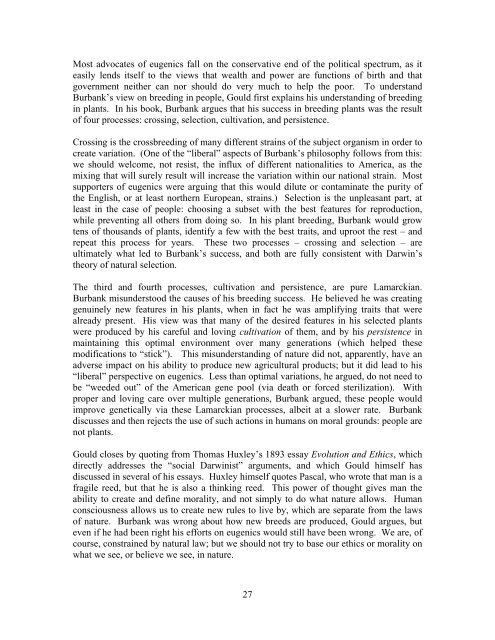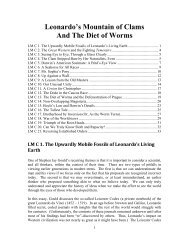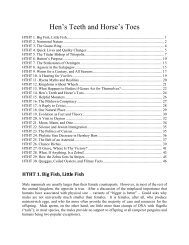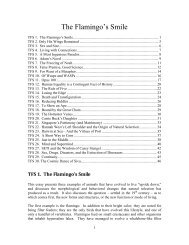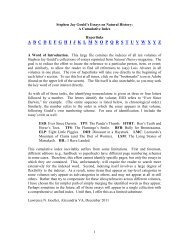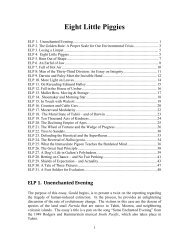Dinosaur In a Haystack - A Website About Stephen Jay Gould's ...
Dinosaur In a Haystack - A Website About Stephen Jay Gould's ...
Dinosaur In a Haystack - A Website About Stephen Jay Gould's ...
You also want an ePaper? Increase the reach of your titles
YUMPU automatically turns print PDFs into web optimized ePapers that Google loves.
Most advocates of eugenics fall on the conservative end of the political spectrum, as iteasily lends itself to the views that wealth and power are functions of birth and thatgovernment neither can nor should do very much to help the poor. To understandBurbank’s view on breeding in people, Gould first explains his understanding of breedingin plants. <strong>In</strong> his book, Burbank argues that his success in breeding plants was the resultof four processes: crossing, selection, cultivation, and persistence.Crossing is the crossbreeding of many different strains of the subject organism in order tocreate variation. (One of the “liberal” aspects of Burbank’s philosophy follows from this:we should welcome, not resist, the influx of different nationalities to America, as themixing that will surely result will increase the variation within our national strain. Mostsupporters of eugenics were arguing that this would dilute or contaminate the purity ofthe English, or at least northern European, strains.) Selection is the unpleasant part, atleast in the case of people: choosing a subset with the best features for reproduction,while preventing all others from doing so. <strong>In</strong> his plant breeding, Burbank would growtens of thousands of plants, identify a few with the best traits, and uproot the rest – andrepeat this process for years. These two processes – crossing and selection – areultimately what led to Burbank’s success, and both are fully consistent with Darwin’stheory of natural selection.The third and fourth processes, cultivation and persistence, are pure Lamarckian.Burbank misunderstood the causes of his breeding success. He believed he was creatinggenuinely new features in his plants, when in fact he was amplifying traits that werealready present. His view was that many of the desired features in his selected plantswere produced by his careful and loving cultivation of them, and by his persistence inmaintaining this optimal environment over many generations (which helped thesemodifications to “stick”). This misunderstanding of nature did not, apparently, have anadverse impact on his ability to produce new agricultural products; but it did lead to his“liberal” perspective on eugenics. Less than optimal variations, he argued, do not need tobe “weeded out” of the American gene pool (via death or forced sterilization). Withproper and loving care over multiple generations, Burbank argued, these people wouldimprove genetically via these Lamarckian processes, albeit at a slower rate. Burbankdiscusses and then rejects the use of such actions in humans on moral grounds: people arenot plants.Gould closes by quoting from Thomas Huxley’s 1893 essay Evolution and Ethics, whichdirectly addresses the “social Darwinist” arguments, and which Gould himself hasdiscussed in several of his essays. Huxley himself quotes Pascal, who wrote that man is afragile reed, but that he is also a thinking reed. This power of thought gives man theability to create and define morality, and not simply to do what nature allows. Humanconsciousness allows us to create new rules to live by, which are separate from the lawsof nature. Burbank was wrong about how new breeds are produced, Gould argues, buteven if he had been right his efforts on eugenics would still have been wrong. We are, ofcourse, constrained by natural law; but we should not try to base our ethics or morality onwhat we see, or believe we see, in nature.27


